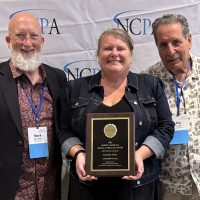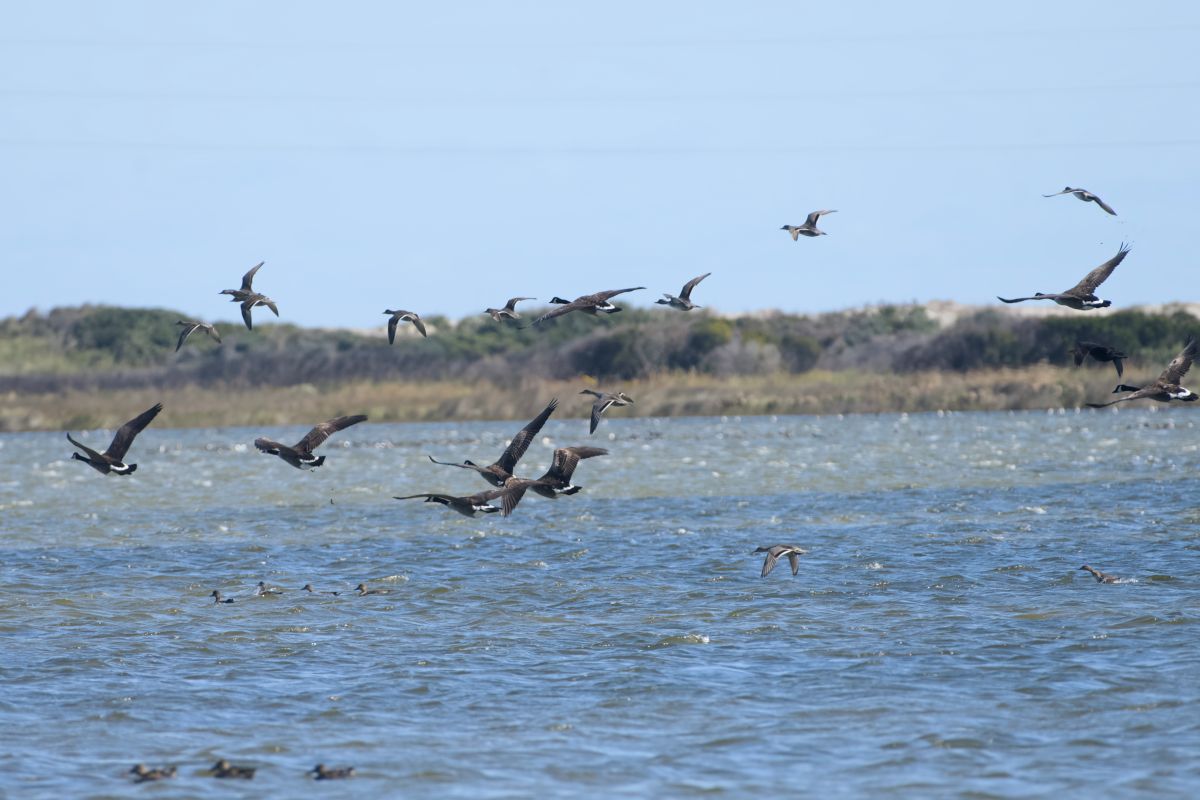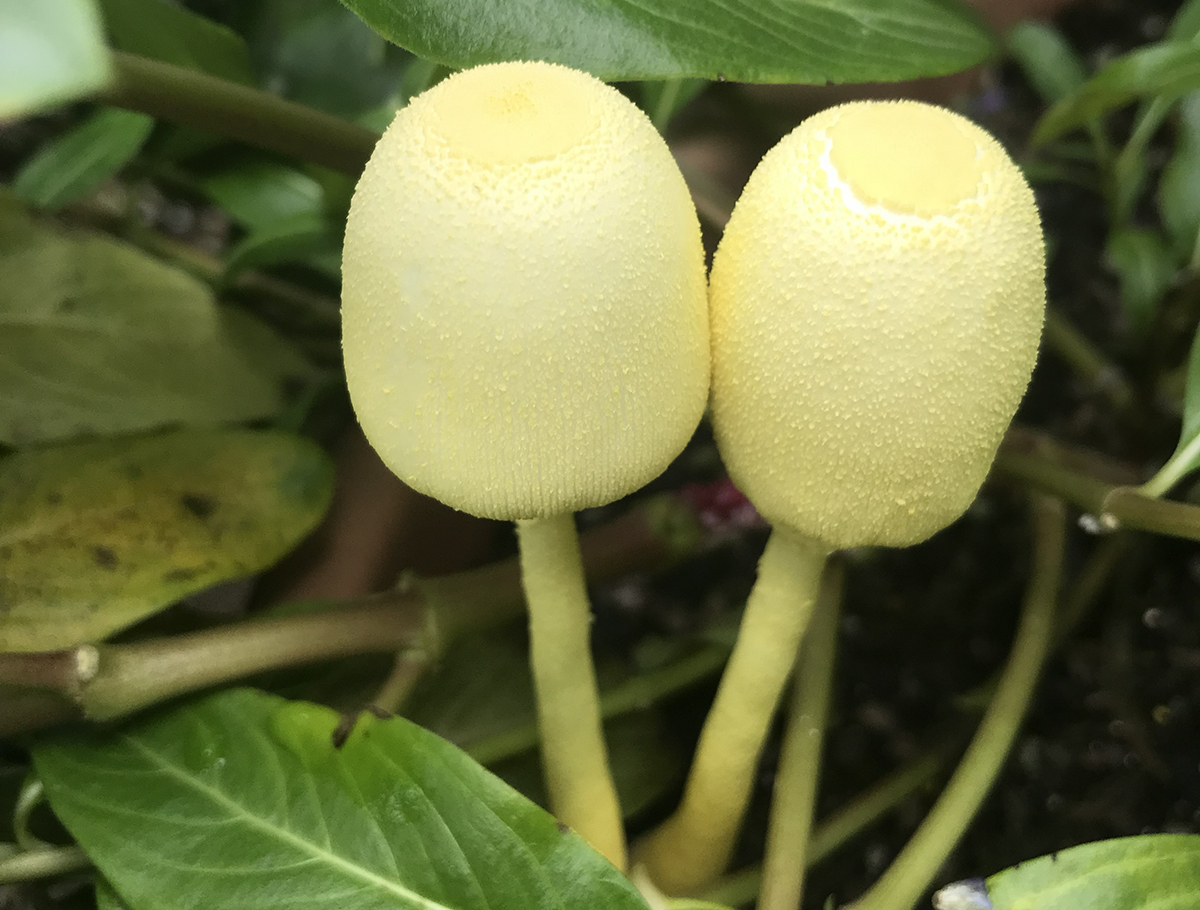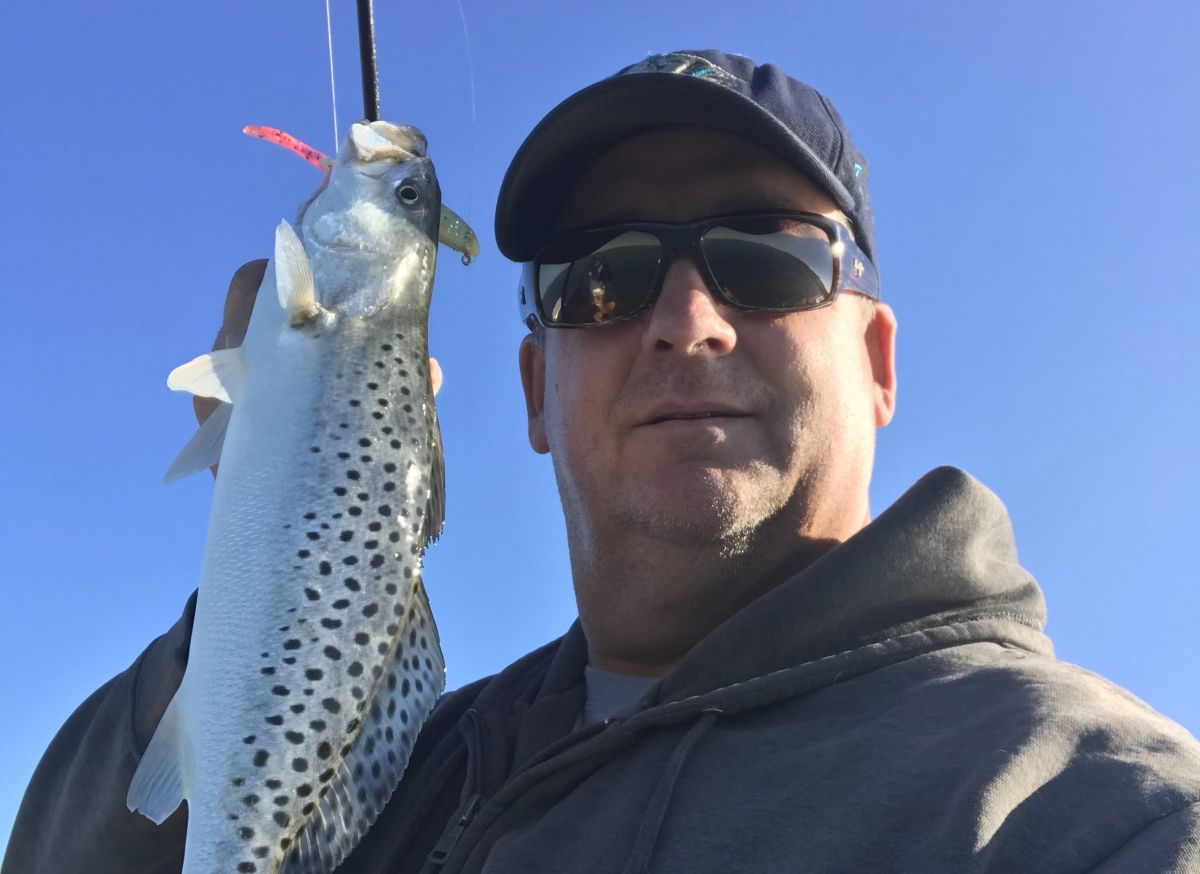CARTERET COUNTY — During a recent early morning walk along the shores of Bogue Banks, the spreading rays of the rising sun pushed the remaining darkness below the horizon and released a brilliant blue sky. A restless cool northwest wind had all the beach grasses, little blue stem, sea oats and the dune shrub branches of yaupon and wax myrtle dancing and swinging. As I made my way off the beach and through a cluster of small lumpy sand dunes, I found a lone monarch butterfly among the tattered seed head of a sea oat plant. It was gripping the stalk of the plant tightly as it swayed in the breeze.

Because of the cool morning air, this monarch would be grounded from flight until the radiant sun warmed its body into a takeoff temperature of about 86 degrees. I left the monarch to sunbathe in the golden morning light, knowing that it would soon be fluttering off to continue its daunting 2,000-mile journey to Mexico.
Supporter Spotlight
The king of butterflies, the Monarch, was named by entomologist Samuel Scudder, the first to document the name in 1847 because, as he put it, “it is one of the largest of our butterflies, and rules a vast domain.” It can be found from central Mexico north into the United States and all the way up to Canada. Monarchs have fascinated us because of their mysterious but magical metamorphosis, phenomenal migration and secretive hibernation. Their scientific name, Danaus plexippus, translated from Greek, refers to their “sleepy transformation.”
Each spring, the generation of monarchs that hibernated in the mountains of central Mexico will be awakened by the longer warmer days. They will mate and by early March they will be heading north looking for their host plants, many different species of milkweed plants, where they lay their eggs. When these eggs hatch, the tiny caterpillars will grow as they munch on the leaves and they will be the first of four generations of monarchs for that year.
The adults of the first three generations live for about two to six weeks, leap frogging farther north laying eggs as they go throughout spring and summer. By fall, the fourth and final generation of the year will begin heading south ahead of the cold fall temperatures and on to Mexico to complete the cycle. This last group will live about nine months and along the trip to Mexico they do not mate or lay eggs. They are mainly focused on finding flowers abundant with nectar to fuel their bodies along their long trek.
Souls of the Departed
It will take the insects almost three months to reach the wintering ground, traveling about 30 miles a day. To conserve energy, the monarch will often fly thousands of feet into the air where it can hitch a ride and glide on northerly wind currents and thermals. Each year some areas may miss seeing the showy mass migration in their communities because the butterflies are high in the air and not visible from the ground. Eventually they will return to the ground to refuel. They actually need to suck up enough nectar to gain weight during this energy burning marathon. Once at the hibernation site, they need to arrive with enough fat reserves to see them through the winter.
The arrival of the monarch in Mexico is culturally significant as the country celebrates Oct. 31-Nov. 2 the Day of the Dead or Dia de los Muertos. This holiday honors relatives that have already passed on and celebrates their return with feasts. The appearance of the monarchs in late October is a homecoming of sorts; legend holds that they are the souls of the departed returning to earth.
Supporter Spotlight
As if the harrowing migration isn’t enough to stress this species, they also have to overcome predators, loss of habitat, poison and climate change. The larval stage of the monarch is most vulnerable to spiders, ants and wasps while the pupae stage has few worries. Adult monarchs do, however, have a secret weapon to deter their main predator, birds.
During life as a caterpillar, the monarch has consumed the leaves of milkweed plants that contain a compound called cardiac glycoside. These compounds now reside in the adult, and when eaten by birds, cause them to displeasingly vomit. So potent is this unpleasant experience, the birds quickly learn to avoid this black and orange gastronomic menace.
A Vulnerable Species
Monarch populations are in a decline for a number of reasons, most notably is the loss of habitat that provides their most basic needs: a host plant, nectaring flowers and shelter. Milkweed is needed to lay the eggs where caterpillars will have abundant leaves to feed on, and flowering plants produce nectar to energize the flying adults. Critical habitats that support these plants have been lost to development or rendered unsuitable due to excessive mowing practices and the heavy use of herbicides. Adult monarchs also die outright from the indiscriminate use of insecticides. The size of their hibernation sites, which provide shelter from the weather, continues to shrink from deforestation.
These forests, where it is estimated close to 50 million monarchs hibernate in huge clusters on the branches of oyamel fir trees, are high in the Sierra Madre Mountains. At close to 10,000 feet, the site is cool enough, without freezing, that the monarchs do not metabolize and, thus, conserve their fat reserves. The forest is frequently covered in clouds and fog which keep the insects moist and provide water to drink. Finally, the surrounding forest forms a protective buffer from high winds during storms. This site, known as the Monarch Butterfly Biosphere Reserve, is so special that it has been designated as a World Heritage Site.
With most of the world’s monarchs hibernating in one small location, the entire species is vulnerable to catastrophic storm events spawned by climate change. Extreme weather events and unseasonable fluctuations in temperatures, attributed to climate change, could wipe out millions of monarchs in one day. Global warming temperatures also make the oyamel fir trees vulnerable to damaging insects that normally don’t tolerate cooler temperatures. One researcher, Dr. Cuauhtémoc Sáenz Romero, has proposed a proactive solution: Start planting oyamel trees at higher elevations to provide wintering habitat for the monarchs when the lower elevation trees start dying out.
It has been estimated that monarch populations have been reduced by 90 percent just in the last 20 years alone. The monarch isn’t in dire straits just yet, but the potential for disaster still exists. The International Union for Conservation of Nature considers the monarch near threatened and their migration spectacle a threatened phenomenon. Monarch Watch, established as a nonprofit in 1992 through the University of Kansas, has been a leader in promoting education, research and conservation of monarchs. The program relies on volunteers, teachers, researchers and students to tag and observe monarchs to learn more about their migration. They also are promoting their Monarch Waystation Habitat program to create fields of milkweed and flowering habitat at schools, public land and commercial and residential landscaping. We can all contribute by doing the same in our yards and discontinuing the use of insecticides and herbicides on our properties.
Promoting Conservation
For the past three years, the central regional office of the North Carolina Coastal Federation has been working with teachers and students to promote monarch conservation through educational programs and enhancing rain gardens with milkweed and nectar producing flowers. We recently went to a primary school where the federation had constructed a rain garden to eliminate stormwater runoff from a school parking lot. We talked with the kids about the value of reducing water pollution by creating the rain garden but also spoke of the importance of the rain garden plants for pollinators such as butterflies and bees.
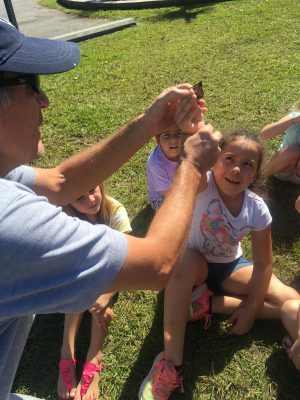
The addition of pollinator education into our rain garden programs is supported by a U.S. Fish and Wildlife Service grant. This grant creates critical habitat for pollinating insects such as the monarch. We helped the children create their own paper monarch, place a tag on it and practice capturing it in a butterfly net. The final activity was to tag and release a live monarch. The children sat in front of me on the grassy lawn with their wide eyes staring up at me in anticipation. I began to really appreciate the tough job that our teachers face every day on how to reach their young minds. I enjoy teaching school kids, but first-graders, that’s a tough crowd; I’d rather wrestle a grizzly bear.
As I placed the tag on the monarch, I thought about how important it is to be exposed to nature at a young age to foster appreciation and compassion for our natural world. I helped one of the students caress the monarch between her fingers and hold it over her head, then we released it. As it fluttered off into the cloudless sky and the kids oohed and awed, I heard one of the students say “have a safe trip to Mexico.”

